






| Capricorn Beetle (Cerambyx scopolii (Fuessly, 1775)) |







|
|
Scientific name: Cerambyx scopolii (Fuessly, 1775) Common name: Capricorn Beetle French name: Petit capricorne, Capricorne de Scopoli Order: Coleoptera Family: Cerambycidae Wingspan : Body size : 18 to 25 mm; Antennas: Twice the length of the body for the male, hardly the length of the body for the female. Biotope: Woodlands (mainly deciduous, rarely coniferous), woodland edges, orchards. Geographic area: Europe, North Africa, Asia Minor. Observation period : Early April to mid-August. |
The Capricorn beetle is a Coleopteran member of the Crambycidae family (long horns). The body is black and lengthened with parallel edges. The elytra and the pronotum are grainy. This is a diurnal insect, unlike other large Capricorn species. You can often observe it gathering nectar, in the sunlight, on many flower species and umbelliferous flowers in particular. The eggs are laid on the bark of many tree species. Larvae first grow under the bark of dead branches or dead trunks, before excavating a 8-10 cm long gallery into the heartwood. Heavy infestation can be harmful to plantations. |
| [To know more about the Capricorn Beetle] [Next picture] [Top] |
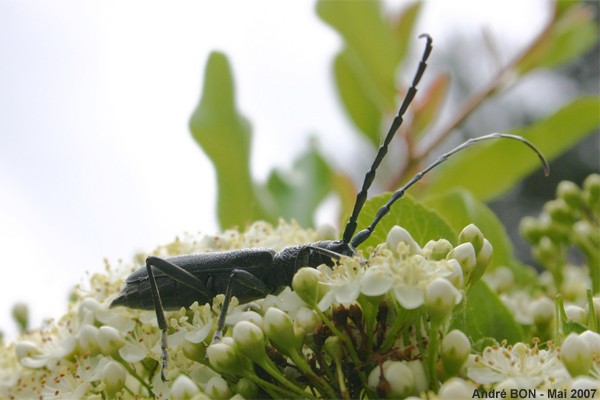
|
This Capricorn Beetle came to gather nectar on the Pyracantha flowers of my garden. I would say this is a large insect though its French name means small Capricorn. It has not been not very shy. I have observed it two consecutive days and it was very easy to get close to it. |
| [To know more about the Capricorn Beetle] [Next picture] [Previous picture] [Top] |
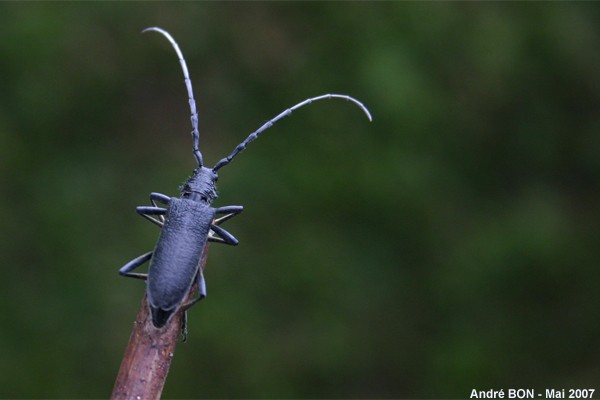
|
Here is another exception to my personal ethics (no capture). I have lifted the Capricorn Beetle up on a twig to shoot some pictures. |
| [To know more about the Capricorn Beetle] [Next picture] [Previous picture] [Top] |
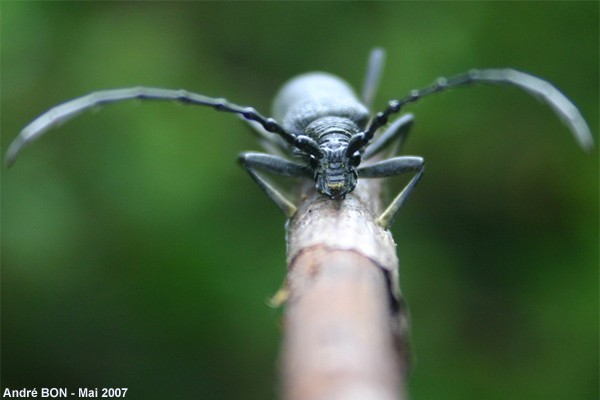
|
The front view of the Capricorn Beetle is a little frightening. It looks like one of the Nazgûl of the Lord of the Rings. |
| [To know more about the Capricorn Beetle] [Next picture] [Previous picture] [Top] |
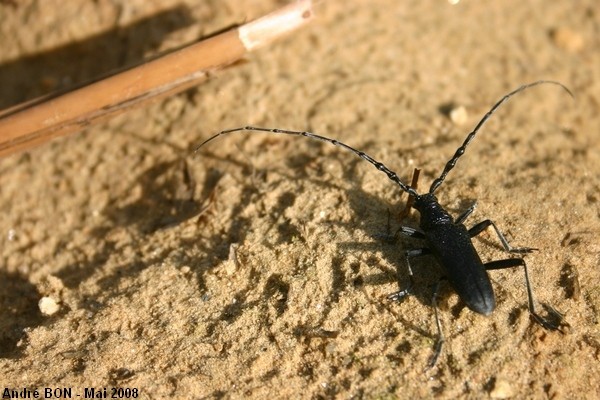
|
I was in the forest, next to Badger's burrows, when this Capricorn Beetle came and landed near me. Instead of Badgers (I should come during the night), I have shot pictures of this Capricorn Beetle. |
| [To know more about the Capricorn Beetle] [Next picture] [Previous picture] [Top] |
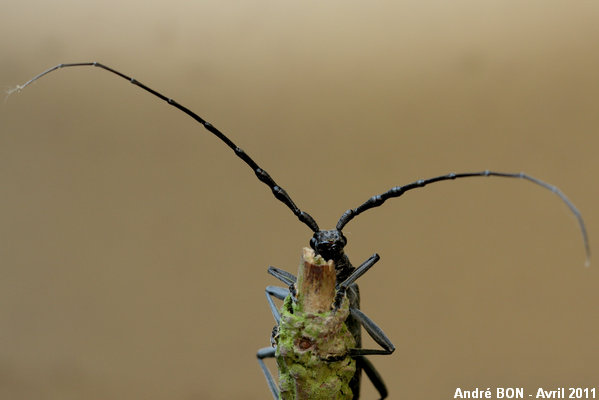
|
This time, I have observed this Capricorn Beetle on one hedgerow of thujas. This environment being dark and not very nice, I have proceeded the same way as before. That's to say I have lifted the Capricorn upon a twig. |
| [To know more about the Capricorn Beetle] [Next picture] [Previous picture] [Top] |
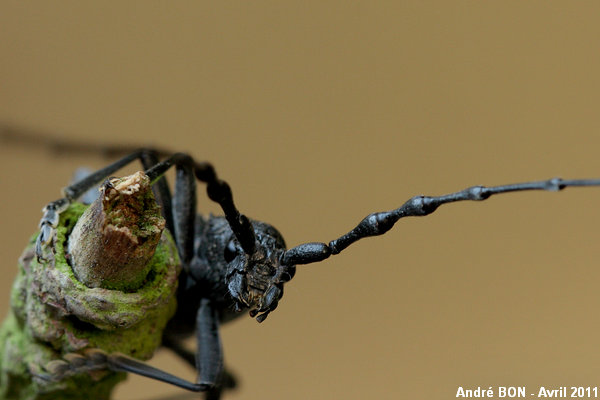
|
The use of true macro lenses has enabled me to shoot better quality pictures this time. |
| [To know more about the Capricorn Beetle] [Previous picture] [Top] |
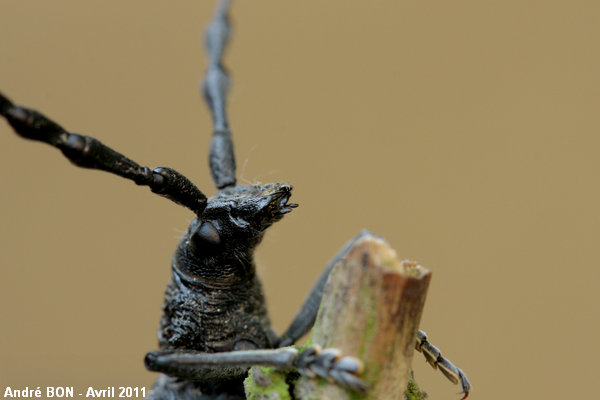
|
While the Capricorn Beetle observed in the forest has been so shy and quickly flew away, this one stayed very calm during the photo session. |